|
SitemapLinksInfo corner |
  |
|---|

HistoryZrinjevac – inheritor and creator
On the location of present-day Zagreb, the first settlements existed even 3000 years ago. Little is known about them, and even less about their gardening. When it comes to Zagreb, the beginnings of its gardening activities are recorded in medieval hortuli. These were gardens in which almost everything was grown: fruit, vine, vegetables, medicinal plants, herbs and ornamental plants. 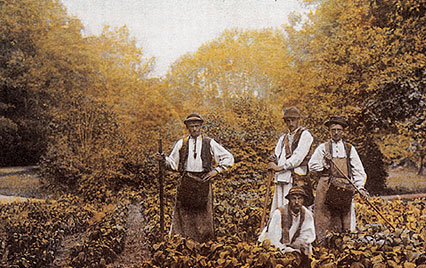 These gardens were kept up until the 19th century, bringing together horticultural tradition and spreading it to new areas of the city. Astonishing proliferation of the culture of flowers, arranged gardens and parks undoubtedly took place in the 18th and 19th century. This is when the Northern and the Southern Promenades were formed, as well as Strossmayer and Vraz Promenades, Maksimir, Mirogoj, square parks of Green Horseshoe (master-piece of European historicism), Botanical Garden, Ribnjak Park, Zagreb tree alleys, and beautiful Zagreb's forest parks (Tuškanac) were arranged... The importance of the leap of the Zagreb's horticultural spirit is also witnessed by the fact that, after the construction of Mirogoj, many small city cemeteries were also transformed into public gardens. This is also witnessed by the following data: In 1870 the city government announced vacancies for the choice of city gardener and eight candidates applied. Among them, Anton Lux was selected, and eight years later he was succeeded by Josip Pelkar. Only a few years later (1891), 33 candidates sent their applications. These were excellent gardeners from all countries of Austria-Hungary and a few of them from abroad. And only one year later, no less than 44 candidates competed for the position of city gardener! So it is no surprise the city government – with the aim of finding as best, as skilful, and as creative gardeners as possible and entrust them with the care of city gardens, parks and promenades – founded Gradska vrtlarija (City Gardens Company) in 1893, and appointed the famous gardener, Franjo Jeržabek, as its head. 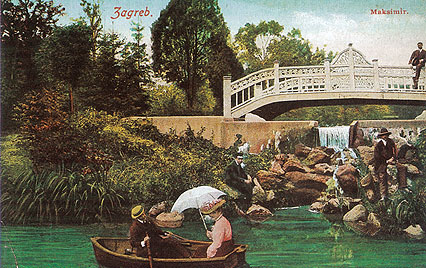 1. What greenhouses, hot beds, workshops, warehouses, outbuildings and, of course, numerous and skilful gardeners meant for the development of park culture of Zagreb, can be seen from the fact that in the early 20th century Zagreb was called a city of "beautiful parks". So in addition to the white Zagreb, it also became the green Zagreb! Numbers also confirm this: until 1932 a total of 115,000 m2 of new public green areas were arranged, of which all vegetation was produced by the City Gardens Company. Its activities continued to expand, so soon it lacked space at its initial address (present-day Koturaška street). So in 1934 it got a plant nursery in Markuševac (25 ha), and later the area next to Remetinačka Road (where Zrinjevac still has its seat today). In return, the city got an arranged Krešimir Square, a square park around the Meštrović Pavillion, a tree alley on Medvešćak, an enriched Zvonimir Street, a perennials garden in Remetinačka and numerous tree alleys across the city. Simultaneously, Gradska vrtlarija developed into a sort of horticultural academy raising excellent gardening experts and producing all necessary ornamental plants for Zagreb, but also for other regions of Croatia. On the eve of the Second World War it was employing around 100 experts. During the war it barely subsisted, and then, in 1948, burdened by time and ideology it was reorganized and received a new name – Nasadi (Green Areas). Gardens and parks of Kuhačeva Street, northern part of Ribnjak and Radić promenade were arranged, as well as green areas in Rapska, Jakičeva, Petrova and Savska Street, and the garden complex of Ruđer Bošković Institute... But these were the times of new administration and new land division of city areas. In 1955 the city was divided into municipalities, and they got services as if they were cities themselves. So the wish to be efficient transformed into chaos... Instead of unique care of the maintenance of city vegetation, pluralism was formed, which implied ununiform criteria, stagnation and falling behind. In this period numerous city parks were decaying. 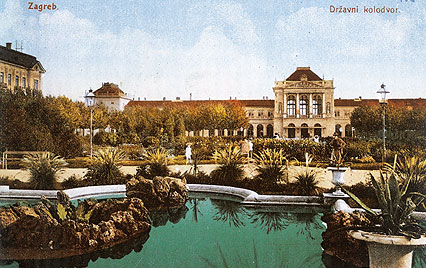 2. Today we read: "Park architecture in Zagreb, compared to the one in the 19th century, when each urban idea was accompanied by a landscaping project, was not developing in parallel with the city building and was not following examples of rich heritage. This especially applies to new city boroughs. This is why Zagreb needs a value shift when designing landscaping projects…" In existing circumstances, Nasadi did what it could. It moved to Remetinečka 15, where it developed gardening production and improved the production of gardening and technical equipment and machinery. In 1962 it changed its name again: now to Flora – poduzeće za gradsko zelenilo (company for city greenery). Five years later, the city government entrusted Flora with the care of arrangement and maintenance of public city vegetation, so since then Flora takes care and maintains around 140 ha of city vegetation fundus and employs around 300 employees, of which 10 engineers and 20 highly skilled experts. However, a dozen other companies performing the same activities operated in the city, which forced the city government to merge the most significant ones – Flora, Jankomir plant nursery and Unikum-Hortikultura – into a single company under the name Zrinjevac in 1977. The new company began to operate on 1 July 1977, and it was structured in the following manner: The Sector for the arrangement of green areas is in charge of the arrangement of all public green areas, children's playgrounds and sports fields, gardening-landscape and other horticultural and recreational facilities, arrangement of environment and production of ornamental plants. Park Maintenance provides services across the city, and to third persons as well. Flower Growing produces ornamental plants in greenhouses, hot beds, plastic greenhouses, and in outdoor areas it arranges and decorates fair and other business premises and deals with retail. The business unit Metalwork and Carpentry produces equipment for green areas, squares, children's playgrounds and sports fields, as well as recreational facilities. Expert services are in charge of technical-commercial, accounting, planning, designing and other tasks. 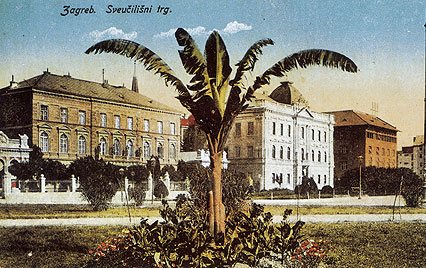 3. The new company and new organization soon left their trace on the face of Zagreb. While in 1975 the organized arrangement, care and maintenance of ornamental vegetation encompassed 260 ha and 61 km of tree alleys, 10 years later the same care covered 596 ha and 70 km of tree alleys. At the same time, this is the period of new parks: Bride and groom's park, Vjekoslav Majer park and Stjepan Radić park. With the establishment of the Republic of Croatia and new organization of city government, Zrinjevac became a public company for the arrangement of public green areas in the city. This happened on 23 October 1990. In its decision the City Administration pointed out the need to plan, design, arrange, maintain, use, care of and protect the overall green components of the city of Zagreb. It assigned this comprehensive care as a task to the newly formed public company, with the purpose of caring of and protecting the area of greenery and recreation, necessary for life and health of people in the City of Zagreb. This way Zrinjevac, as an inheritor of overall horticultural tradition of the city, as an inheritor of spirit from which Gradska vrtlarija emerged, finally became a central institution of comprehensive care of park-forests, parks, city parks, square parks, promenades, entertainment and recreational parks, residential vegetation, green traffic corridors, tree alleys, children's playgrounds, green and recreational areas, forest and agricultural landscapes, greenery in the function of ecological protection. Alpha and omega of planning, design, maintenance, recovery, growing, care, production of plants and gardening technical equipment and machinery, as well as environmental protection. And, of course, the organizer of flower exhibition and achievements of landscape architecture. 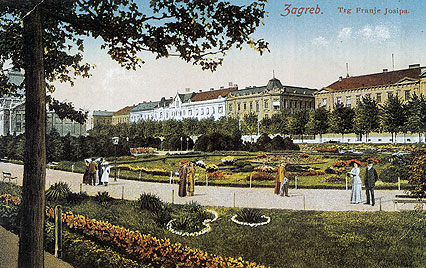 4. All of this, we may say, resulted in the standard of arrangement suitable for a kind of city we all want. "With balanced criteria of arrangement and maintenance of city spatial units, regardless of their location determinants." In numbers it looks like this: while in 1990 Zrinjevac was entrusted with approximately 700 ha of public vegetation in Zagreb, in 1995 it already took care of about 1000 ha, and today it takes care of more than 1100 ha. Tree care and cultivation, protection, recovery, pruning and surgery in tree alleys was performed in 1990 on 99 km, in 1995 on 130 km, and today on around 170 km of tree alleys. Each year around 60 km of city hedge is trimmed and taken care of, and 340 children's playgrounds are renovated, arranged and maintained. Square parks of Green Horseshoe are also renovated, and ornamental trees are now decorating streets and pedestrian zones that previously had no trees, such as: Jurišićeva, Gajeva, F. Petrića, Varšavska, Trg burze… Zrinjevac also gave its city a composting plant, as the first ecological project of waste disposal in Zagreb. In Jankomir (1991) and Markuševac (1994). Each has a capacity of 30,000 m3 of vegetation waste, from which 7,000 m3 of garden compost can be produced (14,000 in total) – the best and the strongest bio-fertilizer suitable for the top-dressing of ornamental city vegetation. In the last decade the company was employing 850 to 950 people, of which around 80 experts thanks to which Zrinjevac is at the very top among companies for various jobs from applied engineering biology and gardening interventions. Zrinjevac produces ornamental plants in plant nurseries and greenhouses of a total surface area of 35 ha, it has at its disposal machinery and equipment for the application of the latest technologies in garden construction, park and bio-engineering field, and produces gardening technical equipment and machinery. 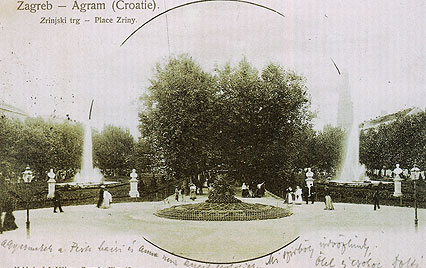 5. On the whole, it can be said that an entire century of gardening and park culture in Zagreb was marked by indispensable horticultural creators – Gradska vrtlarija, Nasadi, Flora and Zrinjevac. This successful and top quality activities have been continued in the 21st century as well with Zrinjevac – horticultural spiritus movens of the City of Zagreb. 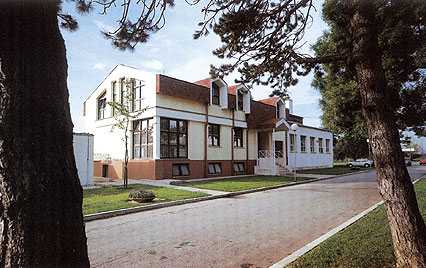 |